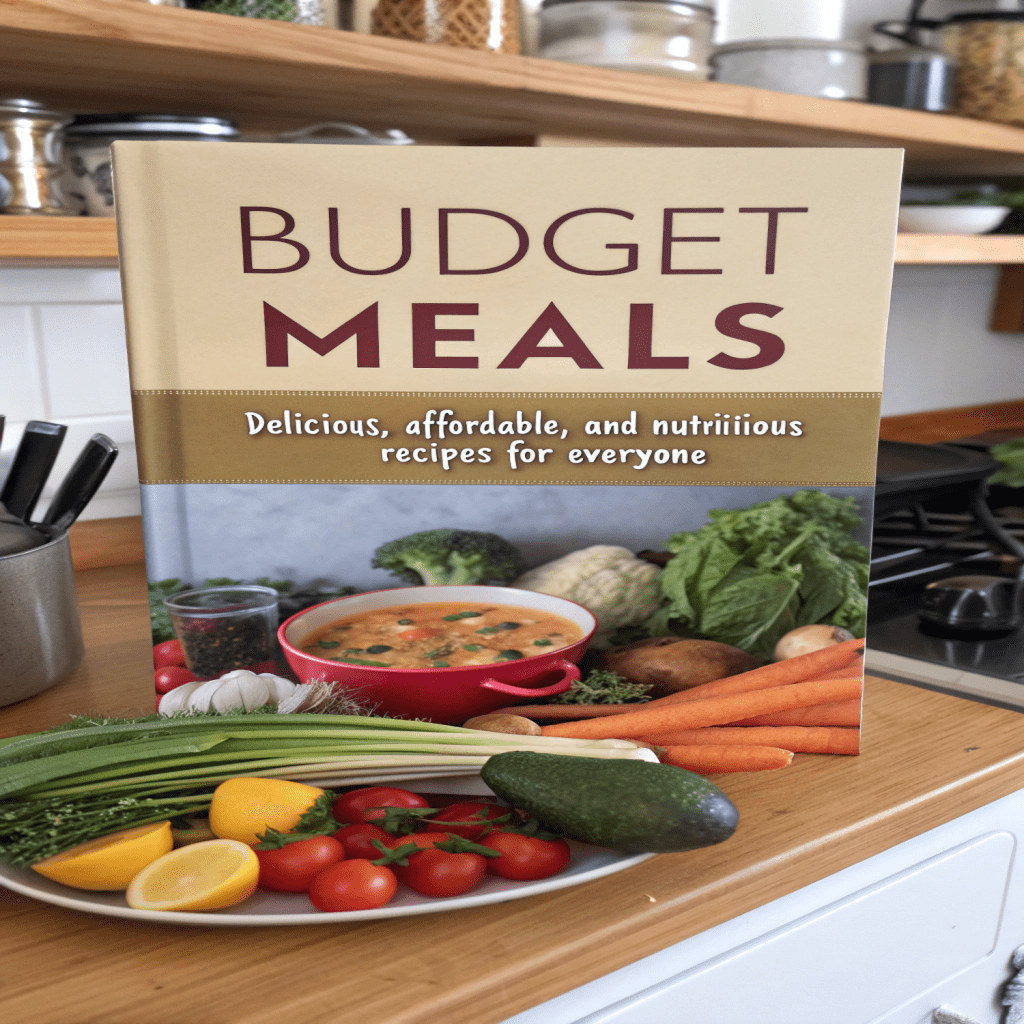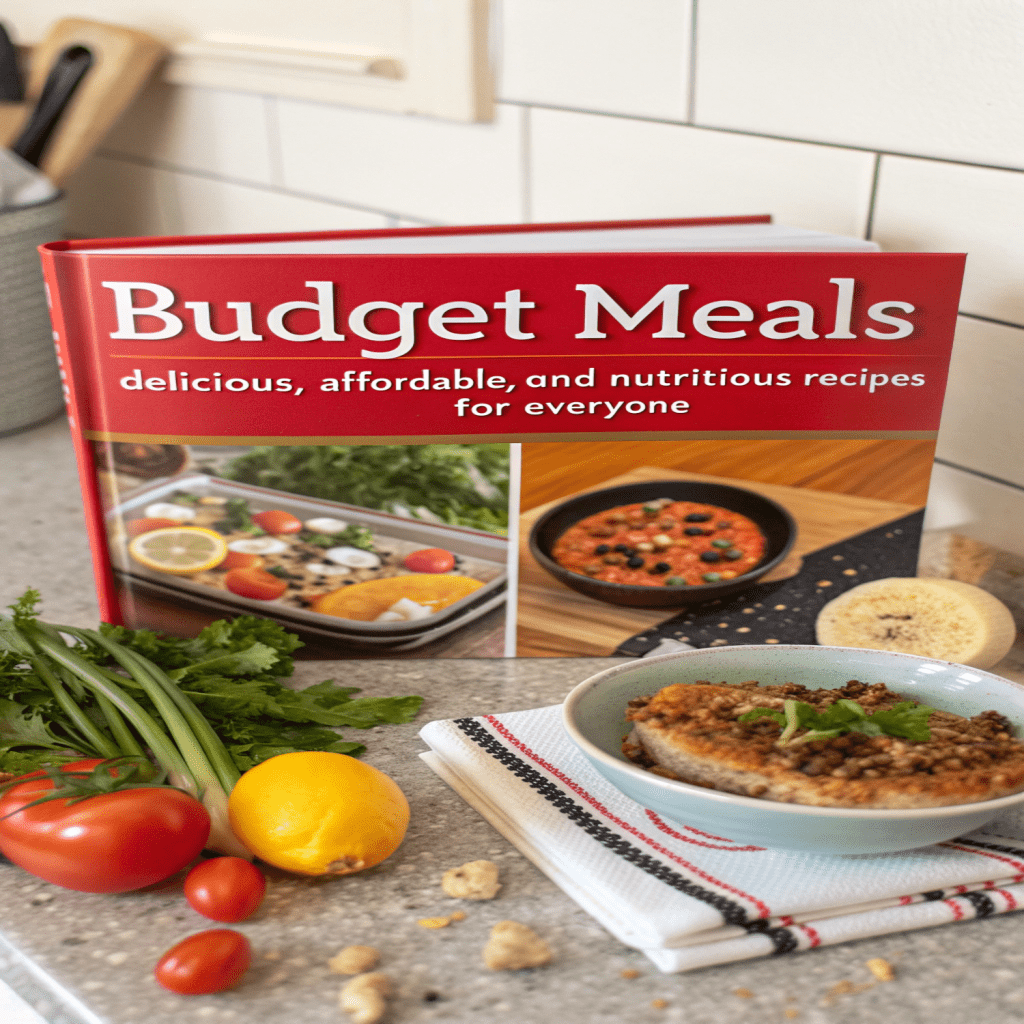
Budget meals solve the challenge of eating well without breaking the bank. In today’s fast-paced world, finding affordable, nutritious, and tasty meal options is a priority for families, students, and anyone looking to stretch their grocery budget. This comprehensive guide explores the concept of budget meals, their origins, how to prepare them, their nutritional benefits, and practical tips to make them a staple in your kitchen.
What Are Budget Meals?
Budget meals are dishes designed to be cost-effective while delivering flavor and nutrition. They rely on affordable, accessible ingredients like grains, legumes, seasonal vegetables, and pantry staples. These meals prioritize simplicity, versatility, and minimal waste, making them ideal for anyone looking to save money without sacrificing taste or health.
The beauty of budget meals lies in their adaptability. Whether you’re a busy professional, a parent feeding a family, or a student on a tight budget, these meals offer endless possibilities. From hearty soups to one-pot casseroles, budget meals prove that eating well doesn’t require expensive ingredients or complex recipes.
The Origins of Budget Meals
The concept of budget meals traces back centuries, rooted in the resourcefulness of communities worldwide. Historically, people relied on local, seasonal ingredients to create filling dishes. Peasant cuisines, such as Italian minestrone, Indian dal, or Mexican beans and rice, emerged from the need to feed families with limited resources.
During times of economic hardship, like the Great Depression in the 1930s, families in the United States and beyond mastered the art of stretching ingredients. Dishes like macaroni and cheese, vegetable stews, and casseroles became popular for their affordability and ability to feed large groups. These recipes often used leftovers or inexpensive staples like potatoes, beans, and rice, which remain the backbone of budget meals today.
Cultural traditions also shaped budget meals. In many Asian countries, rice-based dishes paired with small amounts of vegetables or protein became a cornerstone of affordable cooking. Similarly, Mediterranean diets leaned on legumes and grains, while African cuisines incorporated root vegetables and inexpensive greens. These global influences continue to inspire modern budget meal recipes.
Why Choose Budget Meals?
Budget meals offer numerous benefits beyond cost savings. Here’s why they’re a smart choice:
- Affordability: Ingredients like rice, beans, lentils, and pasta cost pennies per serving, making it easy to feed a crowd or yourself without overspending.
- Nutrition: Budget meals often feature whole foods like vegetables, grains, and legumes, which are packed with fiber, vitamins, and minerals.
- Sustainability: Using seasonal produce and minimizing food waste aligns with eco-friendly practices.
- Versatility: Budget meals adapt to dietary needs, from vegetarian to gluten-free, without requiring expensive specialty ingredients.
- Time-Saving: Many recipes are quick to prepare, perfect for busy schedules.
How to Make Budget Meals: Step-by-Step Guide

Creating budget meals is simple with the right approach. Follow these steps to plan, shop, and cook affordable dishes that don’t skimp on flavor.
Step 1: Plan Your Meals
Start by planning your meals for the week. Planning reduces impulse buys and ensures you use what you have. Consider these tips:
- Check Your Pantry: Take stock of staples like rice, pasta, canned beans, or spices. Build meals around what’s already available.
- Focus on Seasonal Produce: Seasonal fruits and vegetables are cheaper and fresher. Visit local farmers’ markets or check grocery store sales.
- Batch Cook: Prepare large portions of versatile dishes like chili or stir-fry that can be repurposed for multiple meals.
Step 2: Shop Smart
Smart shopping keeps costs low. Here’s how to maximize your grocery budget:
- Buy in Bulk: Purchase grains, legumes, and spices in bulk for significant savings.
- Choose Store Brands: Generic brands often match the quality of name brands at a lower price.
- Look for Sales: Stock up on non-perishable items like canned tomatoes or frozen vegetables when they’re discounted.
- Avoid Pre-Packaged Foods: Whole ingredients like fresh carrots or bulk oats are cheaper than pre-cut or processed options.
Step 3: Master Budget-Friendly Ingredients
Certain ingredients are budget meal superstars due to their low cost, versatility, and long shelf life. Stock your kitchen with these essentials:
- Grains: Rice, quinoa, oats, and pasta provide a filling base for countless dishes.
- Legumes: Lentils, chickpeas, and black beans offer protein and fiber at a fraction of the cost of meat.
- Vegetables: Potatoes, onions, cabbage, and carrots are affordable and store well.
- Canned Goods: Tomatoes, beans, and corn add flavor and nutrition to soups and stews.
- Eggs: A budget-friendly protein source perfect for breakfast, lunch, or dinner.
Step 4: Cook Simple, Flavorful Recipes
Budget meals shine when you use simple techniques to enhance flavor. Try these methods:
- Season Generously: Spices like cumin, paprika, or garlic powder elevate basic ingredients.
- Use One-Pot Recipes: Minimize cleanup and maximize flavor with dishes like casseroles or stir-fries.
- Repurpose Leftovers: Turn last night’s rice into fried rice or blend leftover veggies into a soup.
Budget Meal Recipes to Try
Here are three easy, delicious budget meal recipes to get you started. Each serves four and costs under $10 to make, based on average U.S. grocery prices in 2025.
1. Lentil and Vegetable Soup
This hearty soup is packed with protein and fiber, perfect for a cozy dinner.
Ingredients:
- 1 cup dried lentils ($0.50)
- 1 onion, chopped ($0.30)
- 2 carrots, diced ($0.40)
- 2 celery stalks, diced ($0.30)
- 1 can diced tomatoes ($0.80)
- 4 cups vegetable broth ($1.00)
- 2 cloves garlic, minced ($0.10)
- 1 tsp cumin ($0.05)
- Salt and pepper to taste
Instructions:
- Rinse lentils and set aside.
- In a large pot, sauté onion, carrots, and celery over medium heat for 5 minutes.
- Add garlic and cumin, cooking for 1 minute.
- Stir in lentils, tomatoes, and broth. Bring to a boil, then simmer for 25-30 minutes until lentils are tender.
- Season with salt and pepper. Serve hot.
Total Cost: ~$3.45
2. Black Bean and Rice Burrito Bowl
This customizable bowl is filling and budget-friendly, with a zesty kick.
Ingredients:
- 1 cup rice ($0.40)
- 1 can black beans, drained ($0.70)
- 1 cup frozen corn ($0.50)
- 1 bell pepper, diced ($0.60)
- 1 tsp chili powder ($0.05)
- 1 avocado, sliced ($1.00)
- Salsa or hot sauce ($0.50)
Instructions:
- Cook rice according to package instructions.
- In a pan, heat beans, corn, bell pepper, and chili powder for 5-7 minutes.
- Divide rice into bowls, top with bean mixture, avocado, and a dollop of salsa.
- Serve immediately.
Total Cost: ~$3.75
3. Spaghetti Aglio e Olio
This classic Italian dish uses pantry staples for a quick, flavorful meal.
Ingredients:
- 1 lb spaghetti ($1.00)
- 4 cloves garlic, sliced ($0.20)
- 1/4 cup olive oil ($0.50)
- 1 tsp red pepper flakes ($0.05)
- 1/4 cup parsley, chopped ($0.30)
- Salt to taste
Instructions:
- Cook spaghetti in salted water until al dente.
- In a skillet, heat olive oil over low heat. Add garlic and red pepper flakes, cooking until golden.
- Toss cooked spaghetti in the garlic oil. Add parsley and salt.
- Serve hot.
Total Cost: ~$2.05
Nutritional Value of Budget Meals
Budget meals can be highly nutritious when planned thoughtfully. Here’s a breakdown of their health benefits:
- Protein: Legumes, eggs, and small amounts of meat or tofu provide essential amino acids for muscle repair and energy.
- Fiber: Whole grains and vegetables promote digestive health and keep you full longer.
- Vitamins and Minerals: Seasonal produce like spinach, carrots, or tomatoes delivers vitamins A, C, and K, plus potassium and magnesium.
- Low in Unhealthy Fats: Budget meals often rely on plant-based ingredients, reducing saturated fat intake compared to processed foods.
For example, the lentil soup above offers approximately 15g of protein, 10g of fiber, and 20% of your daily iron needs per serving. The burrito bowl provides healthy fats from avocado and complex carbs from rice, while the spaghetti dish is light yet satisfying, with heart-healthy olive oil.
To maximize nutrition, balance your meals with a variety of food groups. Pair grains with legumes for complete proteins, and include colorful vegetables for a range of nutrients. Limit added sugars and overly processed ingredients to keep meals wholesome.
Tips for Making Budget Meals a Lifestyle
Incorporate budget meals into your routine with these practical strategies:
- Learn Basic Cooking Skills: Master techniques like sautéing, roasting, or boiling to make simple ingredients shine.
- Experiment with Spices: A well-stocked spice rack transforms basic dishes into global cuisines, from Mexican to Indian.
- Grow Your Own Herbs: Fresh herbs like basil or cilantro add flavor for pennies when grown at home.
- Freeze Extras: Store leftovers in portioned containers for quick meals later.
- Join a CSA: Community-supported agriculture programs offer affordable, fresh produce directly from farmers.
Budget Meals Around the World
Budget meals draw inspiration from global cuisines, each with unique flavors and ingredients. Here are a few examples:
- Indian Dal: Lentils cooked with spices like turmeric and cumin, served with rice or flatbread.
- Mexican Tacos: Corn tortillas filled with beans, vegetables, or small amounts of meat, topped with salsa.
- Italian Polenta: Cornmeal cooked into a creamy base, topped with sautéed vegetables or a simple tomato sauce.
- West African Jollof Rice: A one-pot dish of rice, tomatoes, onions, and spices, often paired with affordable proteins like eggs.
These dishes showcase how cultures worldwide have perfected the art of affordable, flavorful cooking.
Common Mistakes to Avoid
When preparing budget meals, steer clear of these pitfalls:
- Overbuying Perishables: Purchase only what you’ll use to avoid waste.
- Ignoring Leftovers: Plan meals that repurpose extras to save time and money.
- Skipping Seasonings: Bland meals discourage consistency, so invest in affordable spices.
- Relying on Processed Foods: While cheap, they’re often less nutritious and less filling than whole ingredients.
Budget Meals for Special Diets
Budget meals adapt easily to dietary restrictions. Here’s how:
- Vegetarian/Vegan: Focus on legumes, tofu, and vegetables. Try lentil curry or chickpea stir-fry.
- Gluten-Free: Use rice, quinoa, or corn-based ingredients. Opt for gluten-free pasta in recipes like aglio e olio.
- Low-Carb: Swap grains for cauliflower rice or zucchini noodles in dishes like burrito bowls.
- High-Protein: Incorporate eggs, canned fish, or budget-friendly cuts of meat like chicken thighs.
The Economic Impact of Budget Meals
Beyond personal savings, budget meals support local economies. Buying from farmers’ markets or local grocers keeps money in the community. Choosing plant-based ingredients also reduces the environmental impact of food production, as legumes and grains require fewer resources than meat.
In 2025, with grocery prices fluctuating, budget meals empower you to take control of your food costs. According to recent data, the average American household spends about $8,000 annually on food. By incorporating budget meals, you could cut this by 20-30%, saving thousands without compromising quality.
Budget meals offer a practical, delicious way to eat well while saving money. Rooted in resourceful cooking traditions, these meals combine affordable ingredients with bold flavors and solid nutrition. By planning meals, shopping smart, and mastering simple recipes, you can enjoy dishes like lentil soup, burrito bowls, or classic spaghetti without straining your wallet. Start experimenting with budget meals today, and discover how easy it is to eat healthily and affordably every day.

